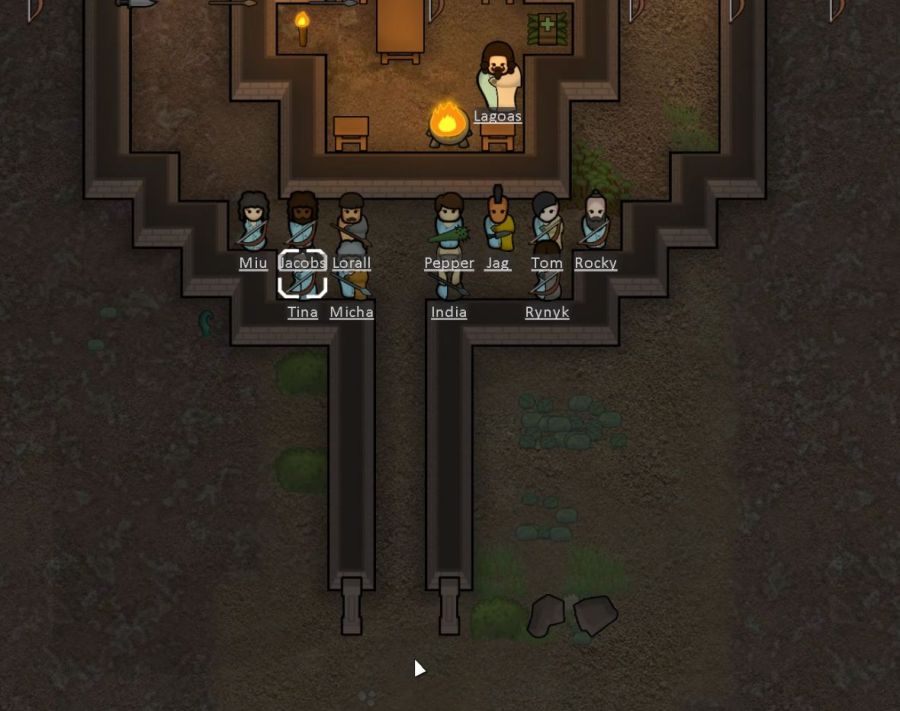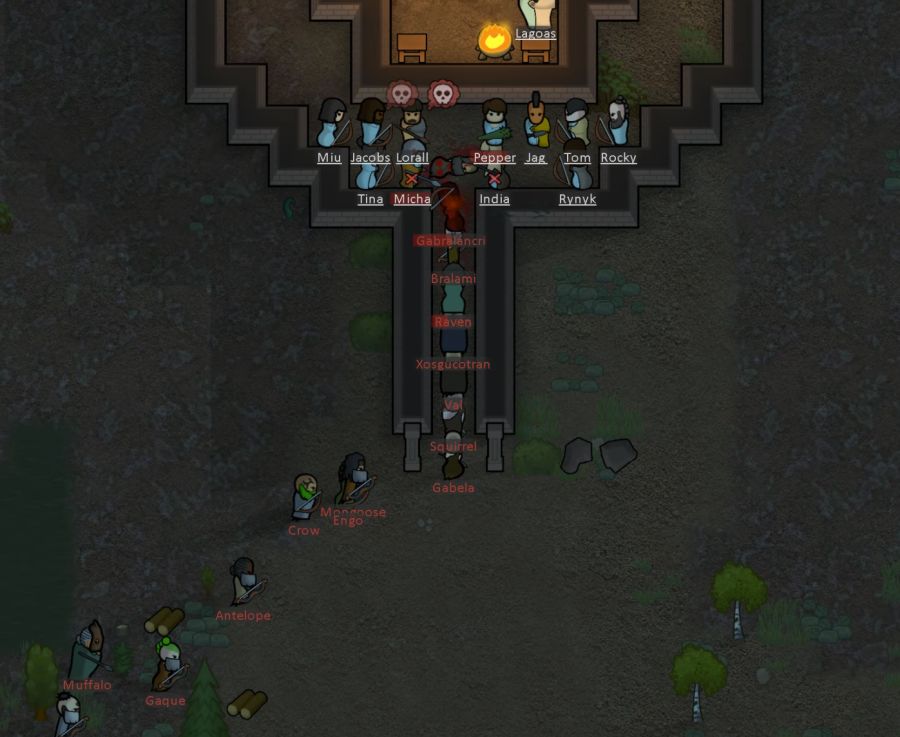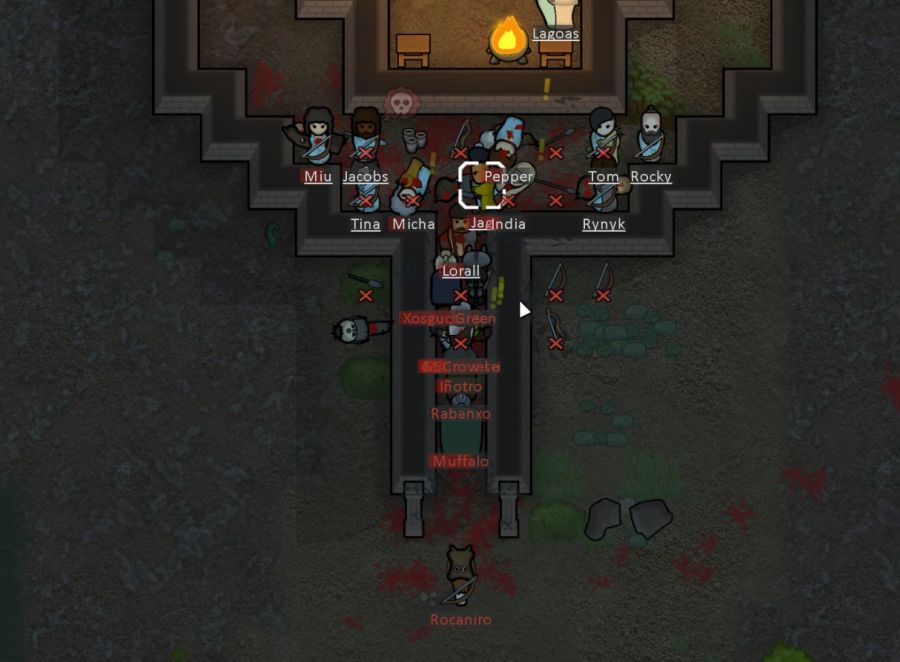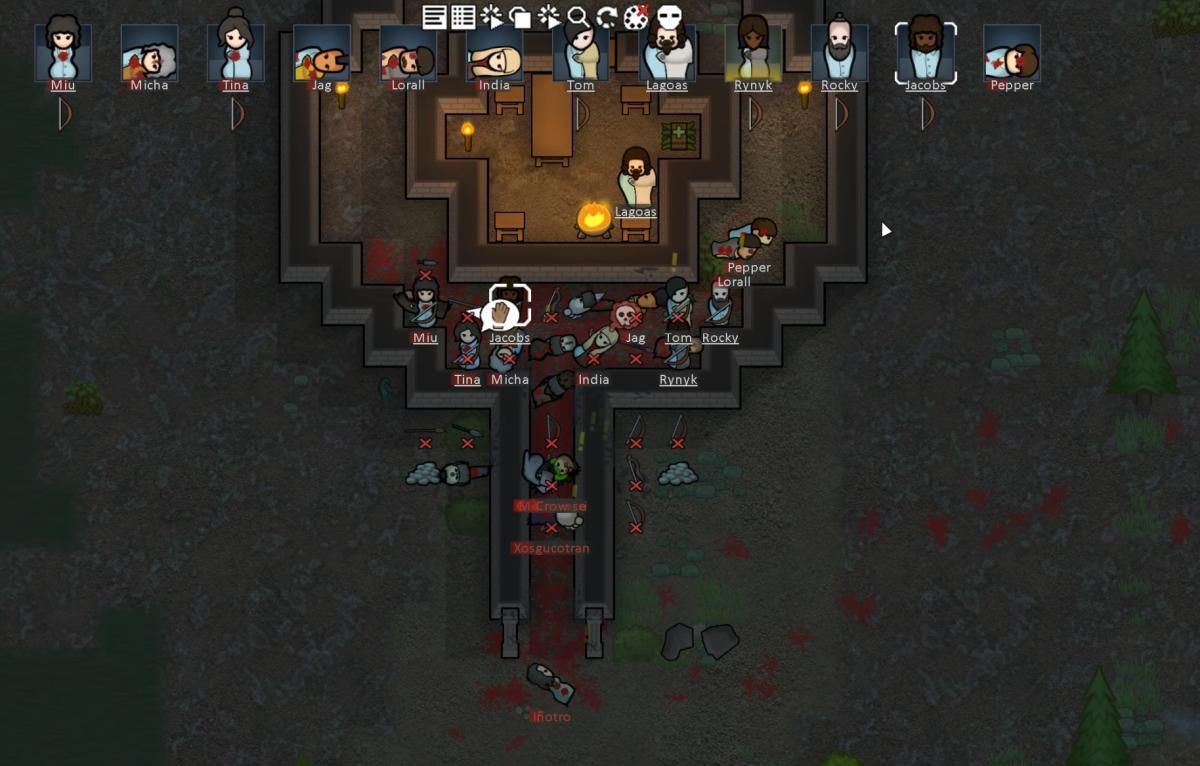I am going to continue the thread over at [stderr] but I wanted to branch into a side-topic here.
[avalus@#10] writes:
You jump to warfare as a reason to build something. As a fellow wargamer, that way to often also thinks ’bout conflicts, I ask you these questions: Look at the layout, is that really a fort? Is that really a defensive architecture? (The ireland parapetry: yes! They have acessible walls, stairs. And no real artworks, all just very small rocks.)
How would you defend Göbekli?
That’s a really good question. First off, my conclusion that the place is a fort (or at least, intended to be defensible) is based on having spent a whole lot of time crawling around castles and forts. Most of my table-top wargaming experience involves napoleonics, medieval Japan, and WW2. In those games, reducing fortresses isn’t especially popular, as a scenario. Mostly because it’s miserable and lopsided if it’s done right. But, when you get to computerized wargames, then you’re typically up against an algorithm, on a flat(ish) map, and it turns into what I think of as a “corner fight” – a fight in which you find a terrain element that the AI enemy will have to approach in sequence, so that (if you can kill fast enough) you can defeat them in detail. The most famous corner fight would be Thermopylae which, notably, may not have actually happened anywhere like how it’s described and definitely did not happen the way Frank Miller describes it in 300. John Keegan’s The Face of Battle is probably a good read, for that. But, it’s basic defensive tactics: find a kill-zone behind a terrain artifact that breaks up your opponent’s advance, then try to hold it.
When I looked at Gobekli Tepe, the first thing I noticed was the long, extremely narrow, entry hall. If it was intended as a temple, or a party hall, or pretty much anything but a defense structure, that hallway would not be as long and narrow. Many of the other hallways at Gobekli Tepe are curved, which is relevant because a spearman standing at the end of a hall with an enemy archer 30 feet away, is going to have to dodge very well and will eventually fail. So, I was looking at the hall and remembered the fort in Ireland, as well as some of the defense works at Carcassone and the Maginot line, and it immediately jumped out as a kill-zone. In the ideal corner fight, your kill-zone allows you to defend against the attacker at 4 or 6 on one, and the attacker is inconvenienced and you can club them down like baby seals.
[By the way, someone told me, I am not sure though, that the spiral stairways in medieval castles tend to go clockwise because people tend to be right-handed. So a defender higher up the stairway could use their right hand to beat the crap out of the top of the head of someone coming up, while the climber’s right hand was encumbered by the center-post of the stairway. Having climbed many stone spiral stairways in my life, I think they’re intended to induce heart attacks in ageing software engineers. But the “encumbering” idea would also apply to the hallway at Gobekli Tepe – it’s very narrow and using a spear effectively in there would suck.]
avalus’ question made me think a bit, because I felt that, in the context in which they asked (as a fellow gamer) I had already explained myself well enough, and I expected them to understand me, but apparently they did not – which is fine. Any failure to be convincing is mine alone. But how to explain myself again without belaboring what I thought was an obvious point. [And, by the way, I socialized my idea of Gobekli Tepe’s nature with some of my wargamer buddies before I did my posting, and they all saw it as a fort, too, but perhaps that was a context I gave them, in the way I asked] But, there is a game where I have fought many hard-fought and horrible corner fights, every one of which has the potential to be a memorable last stand. I am, of course, referring to Rimworld. [steam] [By the way Rimworld 1.5 has a new DLC that includes unspeakable cthonic threats and I am avoiding firing it up for fear of entering a Rimworld Coma] Anyhow, Rimworld seemed a good engine, since it’s got a “god mode” where you can easily build something like:

rimworld gobekli tepe, by mjr in god-mode
The scale is a bit off and, because of how Rimworld implements zones of control and movement, the simulation won’t be perfect. I tried hard to make things “fair” or at least as fair as dropping 25 or so attackers onto a bunch of underarmed and unarmored hunter gatherers can be “fair.” In the illustration above, where the pawn “Jacobs” is standing is the point of maximum pressure, the “corner.” In Rimworld, walls can’t be curved, unless you do some zigzags, so I didn’t make the entry-funnel curved to prevent archery. That has some serious consequences, as you will see:
Rimworld is best played on a huge display like my 5-foot wide 4k panel that I used to play Elite: Dangerous on. There’s a lot of small text and detailed action, but one does what one can. I have a few freeze-frames below.
Battle analysis:
I have 20 aggressors with compound bows, recurves, spears, axes, against 11 (one of my hunter gatherers is a pacifist) I realize just now that I missed a trick – I should have put a crown on him and named him Thag but I did not. Anyhow, the aggressors come in and start toward the fort, while I marshal my forces to simulate a bunch of hunter-gatherers running to their temple-fort when someone starts beating on the alarm-log.
The aggressors quickly assume a formation known to napoleonics fans as “a straggle” and attack. Meanwhile, my pawns have arranged themselves in the kill-zone.

Part of the fun of Rimworld is that the AI is predictable, except when it isn’t. And it’s not very smart, except when it is.
Anyhow, you can see my set-up. I have India and Micha by the entry to the kill-zone, with spears, and Lorall and Pepper with his club are also in reach. My archers are ready to fire into the melee, which would generally be a bad idea, but this is Rimworld and sometimes you get an arrow in the back of your head from a friend. But I don’t particularly care for Micha and India so I am willing to run that risk. Also, my hunter-gatherers are just random pawns the game engine rolled up. Imagine my surprise when I discovered that Micha’s melee skill is: zero. He’s not much of a hunter/gatherer, he could barely kill a berry plant. India’s melee skill is: 3. Oh, well. The point is that carefully selected defenses should overcome our numerical and skill disadvantage.

The fight begins. My fresh pawns quickly demolish the head of the column, taking down 3 of the attacking tribe, KIA. Pepper and Micha take some damage because they are really bad melee fighters. In a normal Rimworld scenario, if I had a geared-up melee expert, they would hold off and carnifex the whole column solo with backup from the others. But that is not to be.
On the other hand, at the rate we are going, we can do this all day.
Until what I was afraid of happening, happens: one of the enemy bowmen is at the head of the column and stops partway down the hall, shooting India and Micha with arrows. Another attacker comes up alongside and adds weight to the fire. The situation is dire. If the hallway were curved, I would have had archers positioned to fire directly down the throat of the kill-zone, but it’s not. So, what to do? I did the only thing I could: I told one of my pawns to head down and “pull” the remaining attackers.
Lorall, whose melee abilities are nothing much to speak of, charges down the hallway, now slippery with blood and crowded with the wounded hostiles who are crawling away. (The exclamation marks are someone who is down and injured but not dying; they may even recover into the fight) Dropped weapons are scattered all over – we will all have nice new spears if we survive this! And I’d get Micha and India some practice time chasing aurochs or something. [The standard Rimworld way of getting rid of a pawn is to give them a knife and tell them to go hunt a bear]

In a hail of arrows, the enemy break and run, crawling bleeding, staggering clutching their bows, cursing the gods, etc.

Status of my pawns. Micha is not in great shape and without help he may bleed to death. Pepper’s pretty messed up and Lorall (who I sent down the hall) is crawling off to the back of the building, leaking badly. But none of my people are actually dead. The enemy did not fare well. Several are dead and 6 of them are down and I still have plenty of unwounded troops who could capture them and enslave them or haul them to a trading post and sell them.
King Thag has won another great victory and the fort at Gobekli Tepe has proved itself once again!

Shad, of shadiversity on youtube recently had a piece about stairways in castles counter to what you (and I) have heard.
Places that had seem to have had no practical purpose, and are thus often defined as temples vary a lot, and while yes some have large wide entrances, others do not. The entrances may make any approach twisted or make you bend over, with the idea possibly being that you can not approach with out getting into the correct frame of mind. One of the more recent Stonehenge findings is the whole landscape around it and that people wouldn’t have wandered in from any direction, but would have processed down one of the long processional ways. So while I can see your point about the entrance I don’t think it is a convincing as you do. Also while we know Stonehenge had astronomical significance we also know that a hell of a lot of feasting went one there, that people came from all over Britain, and even from Europe, and that the function did change as the monument changed over the years. All of which have been mentioned by others.
Is there any reason they can’t be both?
I’m not up on ancient tactics, but I have read a good bit about early religions and a lot of religions in the Mediterranean basin had the images of their gods hidden in a secret chamber deep within a structure. The religious aspect of having the image of their god in an inner room may well be a hold-over from a period when there was one main defensive structure which was possibly not only a fort, and granary, but also was the religious center. That would make it easy for everyone to know, “when raiders come, get into the fort/temple as quickly as possible. Our god will help Thag protect us”.
Just a thought.
Regarding staircases. If I remember George McDonald Fraser correctly, the Kerr clan (Scottish borders) were notoriously left-handed, and in their keeps the spiral stairs went anti-clockwise.
the spiral stairways in medieval castles tend to go clockwise because people tend to be right-handed.
The Kiers in Scotland are Reputed to have reversed the spiral as they were said to be predominantly left-handed.
Why not? What assumptions are you making here? Can you not imagine anything that a long, narrow passage leading to a sacred inner chamber could symbolise?
The spiral staircase thing is one of those really persistent stories that doesn’t actually seem to be true. There’s a British buildings archaeologist who spends quite a bit of time trying to debunk common misperceptions, James Wright. He has a book coming out on the subject next month, but for now you might find https://triskeleheritage.triskelepublishing.com/mediaeval-mythbusting-blog-2-the-man-who-invented-the-spiral-staircase-myth/ and https://triskeleheritage.triskelepublishing.com/2023/03/15/historic-building-mythbusting-book-contract/ worth a look.
Vague memories here. Weren’t many cave paintings notoriously difficult to access (narrow passageways)? Does that mean they were defensive structures?
Rob Grigjanis@#8:
Vague memories here. Weren’t many cave paintings notoriously difficult to access (narrow passageways)? Does that mean they were defensive structures?
Maaaaaybe…? I visited a prehistoric cave burial site when I was a kid in France and it involved crawling down a long mud funnel in which you had no prayer of turning around or backing out. I made it but I was a 100lb kid at the time and 250lb Marcus now would quail at the very idea. I guess the point is that a defensive structure needs to be easy to get into and out of for the defender, but hard to get into for the attacker. In the case of the prehistoric cave, you wouldn’t want your attacker to just wedge a big rock into the entrance and come back in 3-4 moons, if they remembered. (although archeologists would pee themselves if they ever thought to move the rock)
I have a piece I am thinking I want to post on this topic, but my new brain drugs really kill my motivation to do anything and it’s going to take me a while.
To be honest, I now realize that with many of my references (e.g.: Themopylae) (corner fights, etc) I was embedding a lot of assumptions regarding familiarity with strategy and tactics. My bad! I think when you tell an armchair general anything that starts with “Thermopylae” they will start thinking in terms of negating mobility and numerical advantage, etc. Note: the Spartans did lose.
wearsbellsonlegs@#4:
Regarding staircases. If I remember George McDonald Fraser correctly, the Kerr clan (Scottish borders) were notoriously left-handed, and in their keeps the spiral stairs went anti-clockwise.
You have just made a GMcDF reference I am not familiar with. Where is this from? (I want to obtain it and read it!)
For the record: I now consider the spiral staircase story to be debunked. [Until and unless someone enters into the record something by some medieval castle architect explaining the issue.]
BTW, not relevant but I am reading a lot about prehistory right now: when talking about Romans or Egyptians, (e.g.: historic) there are frequently sources that actually explain things like that. It’s amazing! I am making this up but it is not at all unlikely there would be some Egyptian pyramid-building contract stipulating a right-hand twirl because so and such priest read the entrails and said that was the best direction and pharaoh agreed.
Cheers – I know it wasn’t a major strand of your actual argument on prehistoric sites, but thought it would be worth throwing the straircase debunking out there so you don’t perpetuate that bit of quasi-medieval folklore!
Marcus @ 10,
It’s ‘The Steel Bonnets’, a history of the Reivers of the Scottish Borders.
And also GMcDF’ ‘The Candlemass Raid’ Fiction, set in that location and era.
https://en.m.wikipedia.org/wiki/Passage_grave
I don’t want to speculate about the relationship between these Western European neolithic constructions and Gobekli Tepi, but they’ve got the same easily defensible single entrance thing going on. Seems relevant that they’re called “passage graves” but some don’t have any evidence of human remains or grave goods.
Another explanation for the double walled construction on the enclosure with the long entrance is that the apparent outer wall enclosure was the original structure.
They were in use for long enough that they probably would need to be repaired and renovated every few hundred years or between earthquakes.
There are still a few monoliths visible at Gobekli in their original location, and gaps in the outer wall where they removed and rebuilt into a smaller enclosure around the two central monoliths.
If you look at the aerial photos in the previous post, it’s possible to see the ghost of a possible older and larger circular structure around the current double walled version.
I did not bookmark the info, but there are multiple building phases involved. I’m not sure if there is any definitive source for chronology yet, as everything is still ongoing.